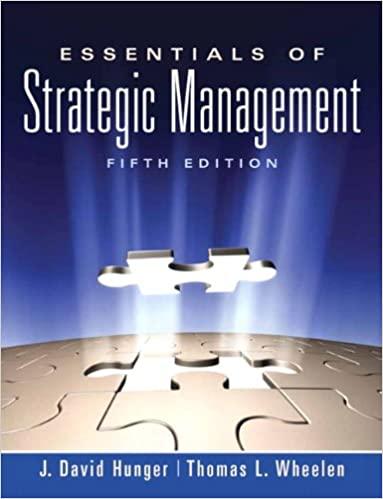Question
Consider the case study described below which is adapted from a real business case. Netflix has a revenue plan that is completely based on subscriptions.
Consider the case study described below which is adapted from a real business case.
Netflix has a revenue plan that is completely based on subscriptions. Customers maychoose from three payment options that provide them access to both exclusive and nonexclusive TV series and movies that the firm has either created or licensed from the content owner. Netflix can invest in content through in-house production or license agreements with content suppliers thanks to subscription fees and cash raised through fresh debt offerings. However, even though Netflix can make great money through its subscription services, it has to pay great commission fees to Apple. More specifically, Netflix made $853 million on the iOS App Store in 2018, according to new figures from the company. Apple's profit would have been about $256 million based on that calculation, according to the company. To date, the Netflix iOS app has earned more than $1.5 billion in in-app subscription revenue, with Apple taking a $450 million share.
Netflix considers the 15-30% commission charged by Apple on i-phone users as too high! The company wants to negotiate with Apple a lower commission, but Apple is not willing to negotiate that issue. Netflix cannot cancel subscription to existing i-phone users, as it would damage its reputation but most importantly lose millions of subscribers and revenues. However, Netflix could introduce a new way to charge a monthly subscription fee to consumers in Apple Store so they can avoid the 15 to 30 percent charge by Apple. Netflix wanted to run a test in a few small markets to see what would happen if it stopped accepting in-app purchases, of which Apple takes a 15% to 30% cut. In reaction to this test over the next two months, Apple employees met with Netflix to talk about the test and updated their bosses about Netflix's plans as Apple tried to schedule an executive meeting. The position of Netflix is to develop a new way to charge their users to gain all the subscription fees. In consequence, Netflix's interest is to lower the cost so they can have more revenue. Moreover, Netflix considers teaming up with Microsoft to introduce a new lower priced ad-supported subscription plan for consumers, that seems hard to implement with Apples high commission fees in the App Store.
Apple fears that many of its existing users would create new accounts to take advantage of a lower subscription price, free of commissions and that would lead to huge losses for Apple. Consequently, Apple decided to take mild cooperative measures to reach a common ground with Netflix. Apple had lots of creative ideas as bargaining power. One of the ideas was that Apple could offer Netflix the "custom APIs", or non-public software to allow it to build systems to modify Apple subscriptions, handle-free trials or extend auto-renew dates. Apple would also be willing to build features based directly on Netflix requests. Other than that, Apple can provide free promotions of Netflix inside Apple's App Store to increase the download volume of their app. Also, Netflix's commission may be used by Apple to buy App Store search ads to drive downloads to Netflix and bundle Netflix along with other Apple services.
Irrespectively of how the negotiation ended in the real world, suppose you are the leader of the negotiating team of Netflix at the point of time where you wish to negotiate about lower commission fees and more control over your i-phone customers. Try to answer the following questions:
Q3: Strategy 1. What is your BATNA(s) and why? 2. What is your Target Point and why? 3. What is your Reserve Point and why?
Note: The Target Point (TP) is the aspirational point set by a negotiator during preplanning. The TP is, in the mind of the negotiator, the best-case scenario that he/she hopes to achieve during the negotiation process.
The Reserve Point (RP) is the break-off point for negotiations, that is, the time when the negotiator will exit the negotiation without an agreement. The RP is, in the mind of the negotiator, the worst-case scenario for the negotiated outcome.
Step by Step Solution
There are 3 Steps involved in it
Step: 1

Get Instant Access to Expert-Tailored Solutions
See step-by-step solutions with expert insights and AI powered tools for academic success
Step: 2

Step: 3

Ace Your Homework with AI
Get the answers you need in no time with our AI-driven, step-by-step assistance
Get Started


